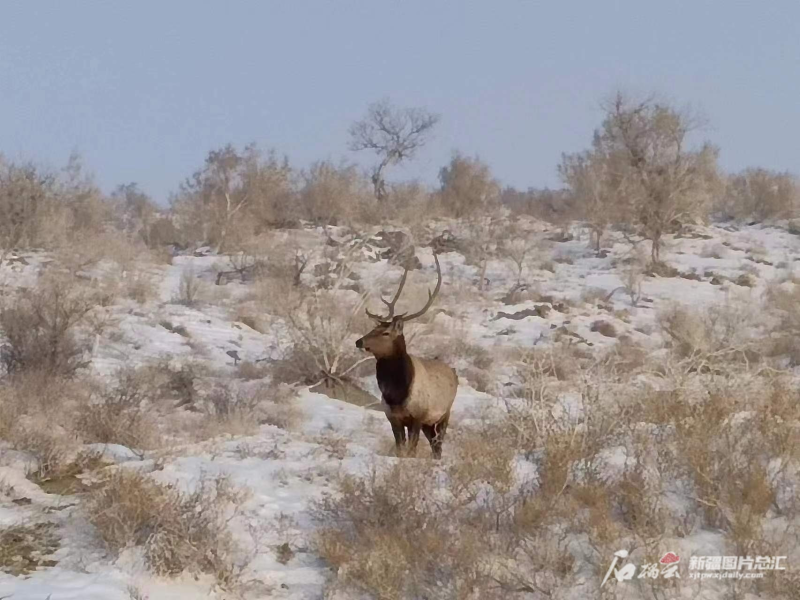Shiliuyun-Xinjiang Daily (Reporter Zhao Mei, Correspondent Yang Changle) news: Foraging gazella, walking red deer, running wild boar... Recently, the staff came across a variety of wild animals during their investigation and took pictures of them in the Ebinur Lake Wetland National Nature Reserve in Xinjiang.

Photo shows the golden eagle photographed by the staff in the Ebinur Lake Wetland National Nature Reserve in Xinjiang. (Photo by Yang Changle)
Turgunjan Tursun, director of the Wildlife Rescue Center of the Ebinur Lake Wetland National Nature Reserve, said that Kekebasitao area, where these wild animals were found, is located on the north shore of Ebinur Lake. Many years ago, there were many herdsmen living here. With the implementation of the ecological migration and relocation plan of the Kekebasitao area in Bortala Mongol Autonomous Prefecture, the vegetation in this area has been restored year by year, the ecological environment has improved, and a large number of wild animals have returned here.

Photo shows the red deer photographed by the staff in the Ebinur Lake Wetland National Nature Reserve in Xinjiang. (Photo by Yang Changle)
"Through scientific research and monitoring, we found that the distribution of wild animals in the reserve is expanding, the vegetation coverage is also increasing, and the ecological environment in the reserve is showing a virtuous cycle trend," said Yao Shuyin, director of the Administration of the Ebinur Lake Wetland National Nature Reserve.

Photo shows the wolf photographed by the staff in the Ebinur Lake Wetland National Nature Reserve in Xinjiang. (Photo by Yang Changle)
Ebinur Lake Wetland National Nature Reserve is located in the inland arid area of northwest China, and is an important ecological barrier in northern Xinjiang. In recent years, after the implementation of a series of effective measures such as grazing prohibition, ecological migration, fighting illegal digging and harvesting, and vegetation restoration in the Ebinur Lake Wetland National Nature Reserve, the number of wild animals such as red deer, gazella, and wolf has recovered, and wild plants such as Populus euphratica, Haloxylon ammodendron, and Tamarix have also presented a lush ecological scene.
(A written permission shall be obtained for reprinting, excerpting, copying and mirroring of the contents published on this website. Unauthorized aforementioned act shall be deemed an infringement, of which the actor shall be held accountable under the law.)









